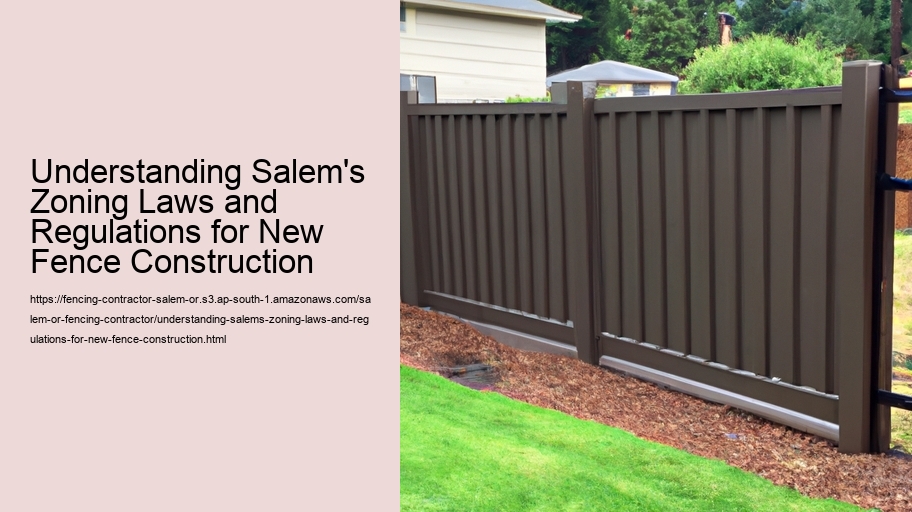Understanding Salem's Zoning Laws and Regulations for New Fence Construction
How to Navigate HOA Requirements for Fences in Salem, OR .
Constructing a new fence in Salem can be an exciting project. It enhances the aesthetics of your property, provides privacy, and ensures security. However, before embarking on this venture, it is essential to understand the zoning laws and regulations that govern fence construction within the city. Failing to adhere to these rules may lead to legal complications, fines, or being required to modify or take down your newly constructed fence.
To begin with, Salem’s Department of Community Development is responsible for overseeing building projects and ensuring they comply with local zoning ordinances. These ordinances are designed to maintain a consistent look and feel within the community while also considering safety concerns.
One of the first steps in understanding fencing regulations is determining which zoning district your property falls under. Different districts have various requirements concerning height limits, materials used, setback distances from property lines, visibility at intersections (to not obstruct driver view), and preservation of historical districts' character if applicable.
For instance, residential fences typically have restrictions on how high they can be. In many areas of Salem, front yard fences may be limited to a maximum height of four feet whereas backyard fences might go up to six feet without requiring special permits. Yet these standards can vary depending on whether you live in a single-family home or a duplex/triplex zone.
Materials used for constructing fences should also meet certain guidelines. The City usually prefers materials that are durable and maintainable while fitting into the neighborhood’s aesthetic harmony. For example, chain-link fences might be discouraged or prohibited in front yards but accepted in less visible areas like backyards.
Setback requirements are crucial as well; these dictate how far your fence must be from sidewalks, neighbors' properties, public right-of-ways or streets. Understanding these boundaries will ensure that you do not inadvertently encroach on public space or another individual’s private property which could result in having to relocate or remove your fence entirely.
Salem also takes visibility at intersections seriously due to safety concerns for pedestrians and drivers alike. There are specific sight-distance criteria that need consideration especially when constructing corner lot fences so as not to create blind spots that could lead to accidents.
If you reside within one of Salem's historical districts or near heritage sites, there may be additional layers of regulation aimed at preserving the unique architectural character of those areas. Special approval might be needed from historical commissions who review designs ensuring they match with historic surroundings.
Before starting your project in earnest it’s important not only to check current ordinances but also apply for any necessary permits through the city’s building department. Permitting processes help ensure all planned structures meet local code requirements including those related with safety standards such as structural integrity against weather conditions like wind loads.
In conclusion understanding Salem's zoning laws and regulations prior commencing new fence construction isn't just about following rules—it's about contributing positively towards communal living spaces where both beauty functionality coexist harmoniously alongside each other Each step taken towards compliance reflects respect towards fellow residents while avoiding potential disputes misunderstandings Now equipped knowledge regarding proper procedures embark upon journey transforming vision into reality creating ideal boundary around beloved home
